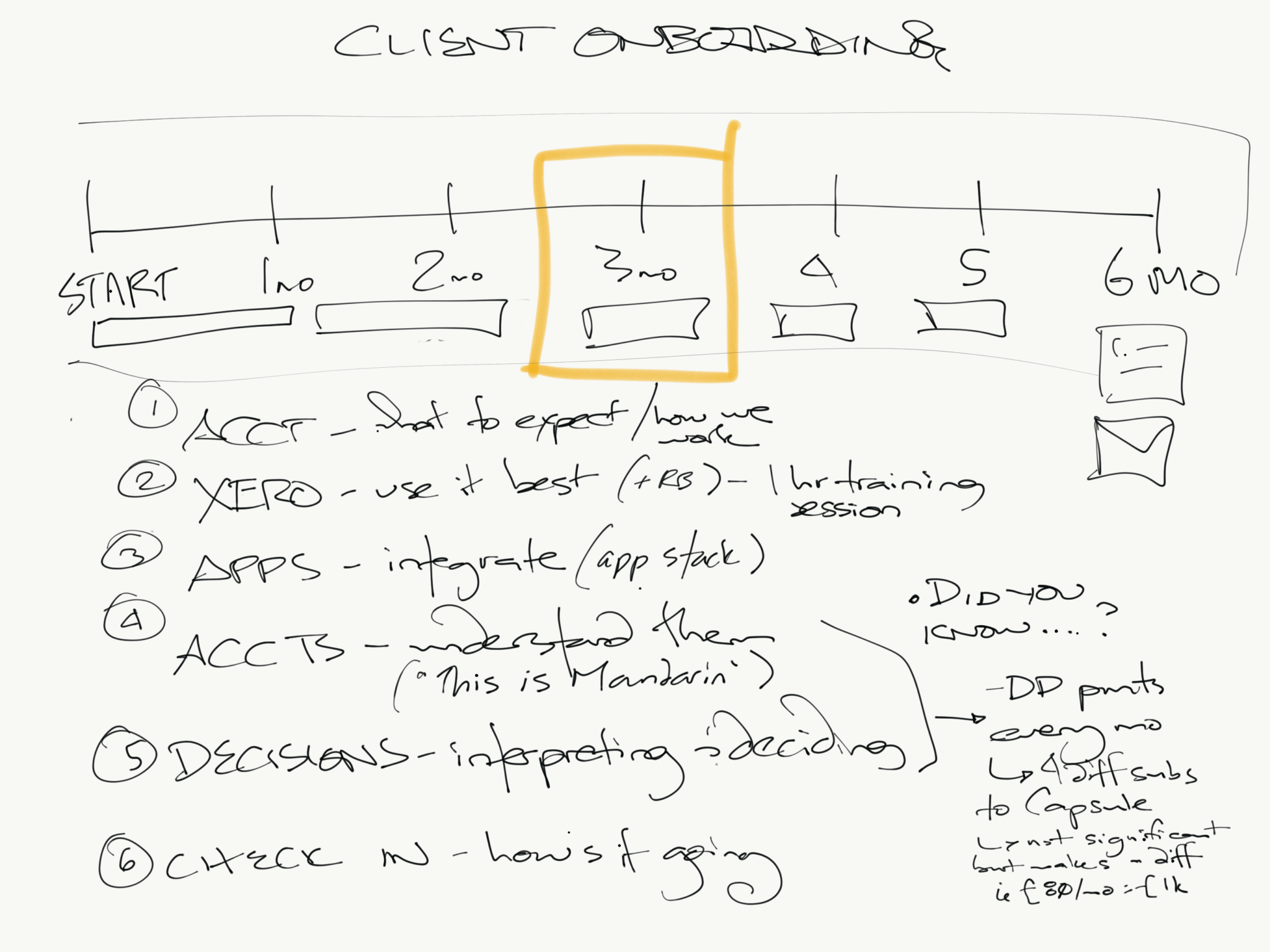 Recently, I was talking to one of our accounting firms who has put a lot of effort into their onboarding process over the past couple of months.
Recently, I was talking to one of our accounting firms who has put a lot of effort into their onboarding process over the past couple of months.
“We’re onboarding clients like crazy and now we want to start looking at experience,” they said.
They explained how even though a large portion of their onboarding process is automated, they still connect personally with the new client to see how they are doing.
They send them a video, they talk to them regularly throughout the process. They make sure the client feels like they’re welcome as opposed to just being another cog in the system.
It’s absolutely crucial to make sure you have the right elements in place so that your clients get the incredible experience you’ve promised them right from day one. And it’s great to automate that.
But the best processes are one that use automation as the machine, and have the human element on top.
As a personal example, I have an account with Scottish Power. I received an email asking me if I wanted boiler cover (since I’m renting, my landlord covers this so I ignored the email).
Then I got a phone call about it, asking me if I wanted the boiler cover. You know how it is with a sales call. You politely explain you don’t want the service, which is exactly what I did.
But guess what? I’m still receiving emails about it, even though they’ve been updated and know I don’t want it.
Scottish Power are using automation for their sales process, but without the humanity on top. They called me at some point, but rather than use the human element to keep me happy, that element has gone in place of relying on the automation to keep the process going.
That’s frustrating, because now I feel like a cog in the wheel, and that’s the last thing your clients would want.
Sadly, we expect big companies to make those mistakes. But your accounting firm doesn’t want to be like that. You want to deal with the human.
The human element taps into feelings
The human element is so important in your process because it eliminates the fear the client has that they’re part of some monotonous system.
It’s there so that you can address what the client is feeling. For your new clients, switching accountants is no small feat, so they’re likely feeling overwhelmed during the onboarding process.
By having a human element, you have the opportunity to tap into that feeling of being overwhelmed and say “Look, we know you’re probably feeling like this. We got you. Here’s what’s going to happen over the next [x] weeks.”
It’s reassurance. That’s what the client wants to feel, especially during the onboarding process. They want to feel reassured they made the right decision coming to you and reassured you’re going to deliver on everything you promised before they signed the proposal.
The best processes for onboarding (with a human element) come from thinking of the person’s experience first.
Experience first, system second
When accountants begin addressing their processes, they can get caught up in the system: Will MailChimp work for our processes? Do we need to sign up to Infusionsoft? Can this be automated?
In order for you to create the process that wows and delivers, you need to take a step back. Sketch it out on the ipad, or in a g-sheet, or even get post-it notes on a blank wall. If you’re not sure where to start with automation, writing out the process manually is good.
That way you’ve got an entire brain-dump of your processes and you can begin improving those without automation, systems, emails and so on.
Take a step back and forget entirely about the system. That way, you’re not forcing a process into a system. Instead, you’re looking at what you want the process to be first and then looking at how the systems can fit into that.
A great example of taking this approach is Raedan. During their marketing planning workshop, they identified that onboarding was a priority for them. We used that time to sketch out what their 6-month onboarding process would look like – What’s the goal with the client each month? What do they need to know? How are they feeling up to now? What needs to be done next?
Once you’re looking at your process in this light, ask yourself the following questions:
- How does the client feel at this moment in time? What’s going through their head? What’s concerning them? When you’ve identified that, you can craft your marketing, whether it be emails, landing pages, videos, around that.
- What do you want the client to feel? Once you’ve identified how they’re currently feeling, you can use your marketing to tell them to feel excited and so on about what’s come.
- What do you want the client to do? Your onboarding process is about them taking action as much as it’s about you doing the work too. Ask yourself at each touch-point what you want the client to do and use your marketing to clear communicate that to them.
Mapping out the process

At this point after you’ve answered those questions, you’re in the right position to start mapping out the dream process and what elements are need. Some of the things you can consider to make sure you include the human element are:
- Send a video to say “welcome”. Make it a very specific video, with the one thing you want them to do next.
- Create a unique thank you page. This could be a page you share with everyone, or you could even create a unique thank you per client if you wanted to.
- Make a note to call the client at a certain stage of the onboarding process. Reach out to them and ask them how they’re doing. No sales pressure, just a call to see if they have everything they need.
- Send them gifts, or swag, or anything useful. A lot of firms I see are starting to send welcome gifts to their clients. It could be branded swag, or even a personal thank-you card, or something else, but adding that personal touch means a lot to the new client.
It’s all about creating an experience, one that mixes automation and the human interaction with the client. Once you’ve got that, you’ve got a system that you can replicate for your other processes: Follow-up, training, events and so on. Let me know how you get on!

